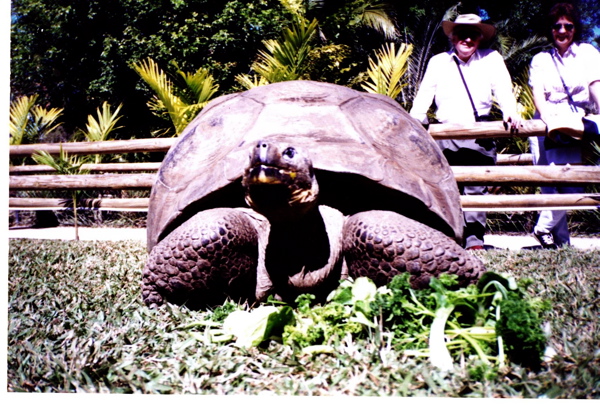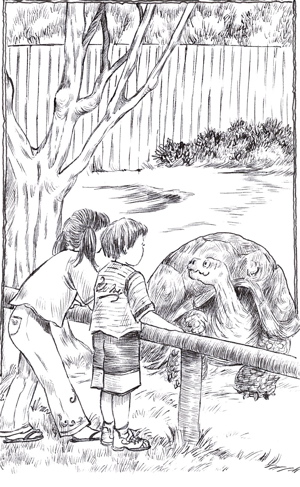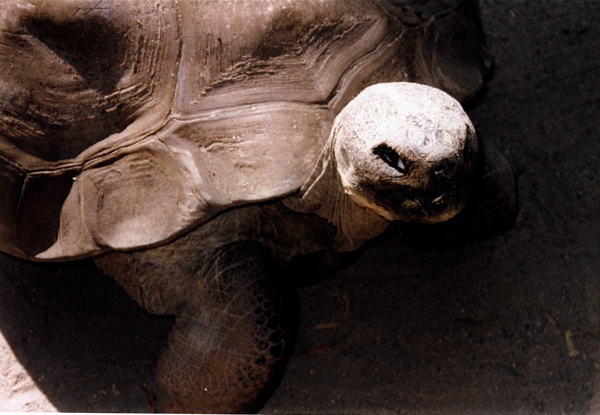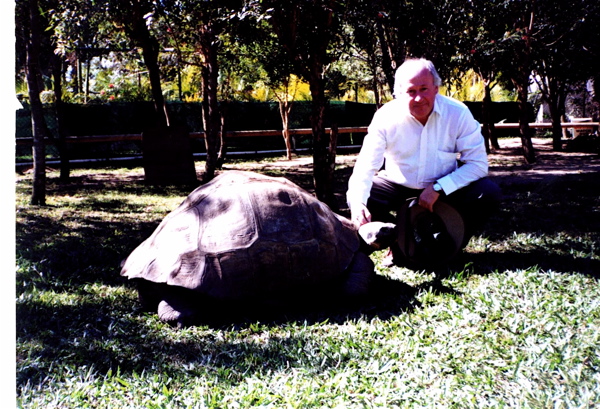For more info on the Charles Darwin Foundation, the Galapagos Islands, and the threatened giant tortoises click on the links

Timeline, by Coral Tulloch
Harriet Q&A
Why did you write Harriet's story?

My publisher Julie Watts at Penguin Books, first suggested the idea to me. I visited Harriet in 2001 and her keepers at the Australia Zoo let me sit with her and ask her questions about her long life.
I'm afraid I don't understand tortoise talk very well, so I spent the next five years digging around in libraries, reading old newspaper files and reports, and making contact with experts in Australia and over the Internet trying to find Harriet's real story.
Did you find the truth about Harriet?
Almost ... but not quite. I got her history back to 1860, when she was given to the Brisbane Botanic Gardens by a Captain John Wickham. He was the Beagle's First Lieutenant when it went to the Galapagos. It seems likely that Harriet was collected then, as other small tortoises were taken. But it's not proof. Wickham may have been given the tortoise by somebody else. In the absence of hard evidence, we have to be cautious about assertions from the past.
... Yet in the end what really matters is that we've been able to know Harriet, just as our grandparents knew her years and years ago. We can admire her for being herself. And for showing us the strength and beauty of life through all the generations.
Is Harriet just a detective story?

It's more than that. I tried to show my young readers what it might be like to live for 175 years. And Coral Tulloch's graceful, whimsical pen and ink drawings brought the flow of history wonderfully alive.
When we're small even 12 months seems like eternity. So I invented two children, Ellie and Zac, visiting Harriet at the Zoo.
And I imagined through their eyes all those amazing people and events Harriet would have known over the past century-and-three-quarters...
Sailing ships ... Captain Wickham ... Brisbane as a small colonial settlement ... Walter Hill (no relation) who laid out the Botanic Gardens ... flood ... the first pineapples ... the first bicycles...
The invention of telephones ... motor cars ... Federation in 1900 ... the Great War ... Depression ... The Second World War ... radios ... television ... the Millenium in 2000...
Harriet learnt to do the one thing tortoises do best. To slow down. To take life at her own pace. And to let the years just roll right by.
What's important about Charles Darwin?

Darwin developed the famous Theory of evolution by natural selection. It holds that all living things change and adapt over time to best meet the conditions of survival.
Significantly the Galapagos tortoises first started the idea in Darwin's mind, for he was told that each of the 15 main islands has a different species of tortoise.
If Harriet really was one of them, she was the last living link with Darwin's theory.
When did Harriet die?
 Harriet died in June 2006, only two weeks before my book about her went to the printer. Coral Tulloch and I had just time to write a Goodbye Harriet note. Harriet died in June 2006, only two weeks before my book about her went to the printer. Coral Tulloch and I had just time to write a Goodbye Harriet note.
At first I felt rather cheated: after 175 years, I thought, she could have gone on a bit longer! But then I realised that her story now had a completeness – and with her death a poignancy it might not otherwise have had.
Harriet in her shell, by Coral Tulloch
Did you go to the Galapagos Islands?
 No. I wish I had, but the opportunity didn't arise. But I learnt much about the endangered tortoises from the Charles Darwin Foundation, and the great work being done to rescue them. Several species are already extinct, victims of human hunting and introduced fauna such as rats, goats and pigs which eat the tortoise eggs and the vegetation on which the creatures survive. For more info click the links on this page. No. I wish I had, but the opportunity didn't arise. But I learnt much about the endangered tortoises from the Charles Darwin Foundation, and the great work being done to rescue them. Several species are already extinct, victims of human hunting and introduced fauna such as rats, goats and pigs which eat the tortoise eggs and the vegetation on which the creatures survive. For more info click the links on this page.
So Harriet is also about the environment?
Very much so. We are all creatures who share this planet, and all have our place in the order of nature.
There's a Pinta island tortoise at the Charles Darwin Foundation called Lonesome George, the last known survivor of his species. At one time it was hoped Harriet would mate with him, but she's from Santa Cruz and the wrong species. I hope they find a Pinta Island female for George to keep his race alive. George is not yet 90 years old ... so there's plenty of time left for him to find a mate!
How long do tortoises live?
Tortoises can live to a great age. Harriet was about 175 years old when she died – but she was only in middle age. There was a famous tortoise called Tuimalila (Little King), given to the King of Tonga by Captain Cook in the 1770s, who lived for nearly 200 years. And in 2006 a giant Aldabran Tortoise called Adwaitya (The Only One) died in India aged over 250!

Anthony Hill with Harriet 2001
|